Integration and Application Network in 2015: The year in review
Bill Dennison ·The IAN Press produced 33 products, 78 blogs were posted by 13 different IAN staff and by the 15 graduate students in the Science for Environmental Management course, and IAN staff were in various media reports 109 times. The IAN Facebook page posted 582 items. The IAN symbol library and image library continued to be downloaded by people from the entire globe (people who downloaded IAN symbols describe themselves as residents of 243 different countries). Over 88,000 people have downloaded the symbol library to date.
IAN staff released two new websites in 2015: Chesapeake Bay Story and EcoHealth report cards. Three apps were also produced in 2015: How's the Beach? (South Carolina beach water quality), Hawaiian birds, Billion Oyster Project data portal. Each of these websites and apps involved a significant amount of web design (Tracey Saxby), web development (Adrian Jones), and content production (IAN Science Communicators and interns).
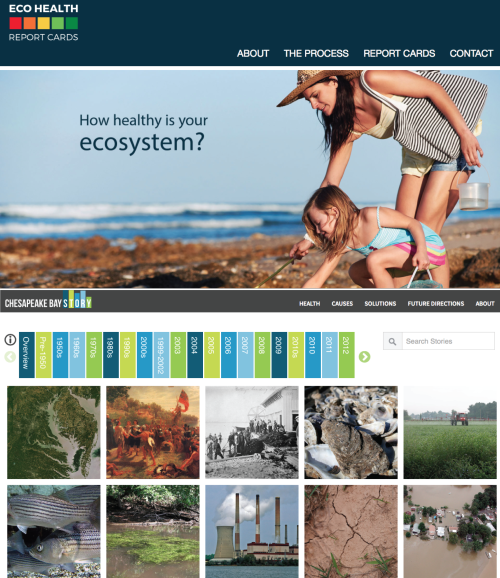
Six new people joined IAN in 2015: Karen Luffman became the IAN Grant Administrator, Cindy Shoemaker became a Program Assistant, Dylan Taillie became a Science Communication intern, Mindy Ehrich became the STAR team analyst at the Chesapeake Bay Program, Dave Yayac became the Web Development intern at Chesapeake Bay Program and Kristin Saunders became the Cross Program Coordinator at the Chesapeake Bay Program. Two IAN science communication interns converted to graduate student status in the Marine, Environmental and Estuarine Science (MEES), Suzi Spitzer and Vanessa Vargas. Several people left IAN to new positions as well. Susan Collins left to join the Maryland Department of Health and Mental Hygiene as a CFO of their Cambridge office, Nicole Lehmer finished her IAN Science Communication internship and joined the Chesapeake Research Consortium to become the Management Board, and Enhancing Partnering Leadership and Management Goal Team Staffer for the Chesapeake Bay Program, Anthony Kung returned to the University of Queensland, Australia to finish his PhD following his six month stint with IAN, Jamieson Colburn left his position as Cloud Architect at the Chesapeake Bay Program to join the State University of New York at Oswego Washington DC office as a DevOps Engineer, and Kiri Carini, IAN's part-time GIS analyst relocated with her husband to Boulder, Colorado to become the Flood Recovery Planner at Boulder County Transportation.
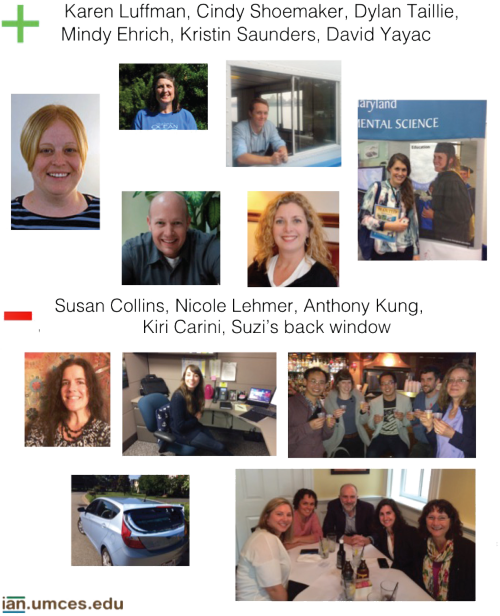
The culmination of several long-term projects undertaken by IAN occurred in 2015. The Mississippi River report card, which was conceived at an America's Great Watershed summit in 2012 in St. Louis, MO, was finally officially launched in October, 2015, once again in St. Louis. We released a draft report card a year ago in Louisville, KY, following a series of workshops throughout the watershed beginning in 2013. Considerably more effort was required to convert the draft report card into a final product. Working with GreenSmith, we were able to generate a big media splash associated with the release. There were over 3,000 media placements around the entire country, including the Wall Street Journal, New York Times, Washington Post, Weather Channel, National Public Radio with 2.8 million impressions on Twitter, and over ten thousand page views on the Mississippi River report card website.

The Long Island Sound report card also generated media attention at the two simultaneous releases: one in Glen Cove, Long Island and the other in Westport, Connecticut. This project was initiated in early 2014 and it was gratifying to see the report card catalyze legislation to fund Long Island Sound preservation. Several other report cards produced by IAN were also released in 2015: Gulf of Kutch near Jamnagar, India, South Atlantic coast, coastal Georgia, Willamette River all released their first ever report cards. In addition, the annual Chesapeake Bay and Maryland Coastal Bays report cards were released. The fourth iteration of the Great Barrier Reef report card was released, this time by the Queensland Minister for the Environment at the annual International Riversymposium.
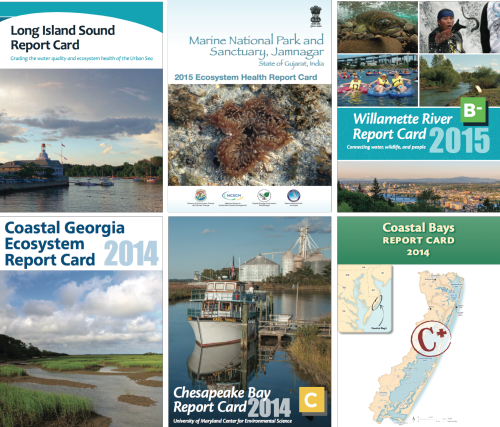
IAN also produced a regional report card as part of a graduate course in the Marine Environmental Estuarine Science (MEES) program. Suzi Spitzer and Vanessa Vargas, IAN graduate students, actively participated in producing the Upper Potomac Headwaters report card which was launched at Appalachian Laboratory as part of the public lecture series, Watershed Moments.
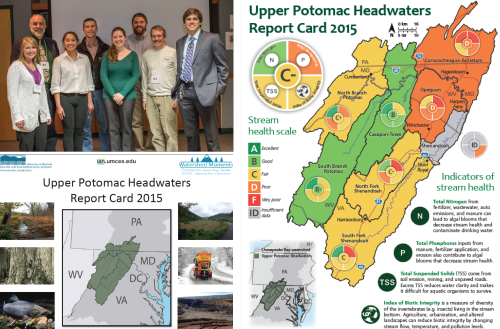
The establishment of a partnership between World Wildlife Fund (WWF) and the University of Maryland Center for Environmental Science (UMCES) was a major accomplishment of 2015. Simon Costanzo and Alex Fries made multiple trips to Colombia to develop the Simon Costanzo and Dave Nemazie traveled to the Philippines to develop a report card for Laguna de Bay near Manila. Jane Thomas, Heath Kelsey and Caroline Donovan kicked off a new project with NOAA's Coral Reef Program with workshops in Honolulu, HA on the status of American Samoa coral reefs and in Miami, FL on the status of the South Florida reef tract. A couple of planning meetings were held in Florida regarding an Indian River a Lagoon report card effort which Bill Nuttle and Alex Fries will spearhead.
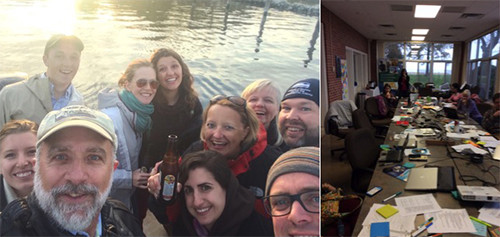
A new partnership was established with the U.S. Geological Survey National Climate Science Center, leading to three workshops and associated newsletters. The first of these workshops was in western Massachusetts on the impact of climate change on moose populations and boreal forests of the Northeast U.S. Another workshop was held in Fairbanks, AL on climate change impacts in the Arctic. In addition, a workshop in Fort Collins, CO on climate impacts on North Central U.S. Brianne Walsh, Simon Costanzo and Bill Dennison are leading this effort.
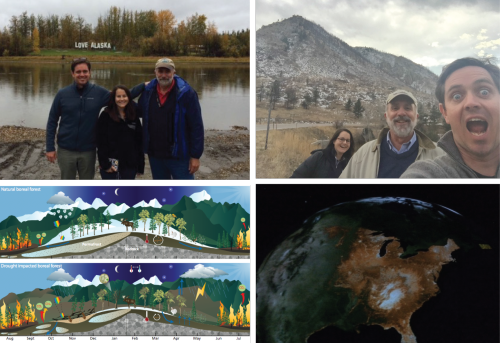
Simon Costanzo and Brianne Walsh continue the long-term collaboration between IAN and the National Park Service, with the publication of two Natural Resource Condition Assessments (NRCA) in 2015 (Wolf Trap Park for the Performing Arts; Prince William Forest Park), while working to complete NRCAs at various other national parks. A new NRCA was initiated for Gateway National Recreation Area in New York and New Jersey. Another long-term collaboration is between IAN and Maryland Coastal Bays and the major accomplishment in 2015 apart from the annual report card was the publication of the Comprehensive Conservation Management Plan. Jane Thomas is the IAN lead on this collaboration.
IAN was reviewed as part of the five-year review of the position of Vice President for Science Application, with presentations and discussions at each of the six UMCES units (Appalachian Laboratory, Chesapeake Biological Laboratory, Center Administration, Horn Point Laboratory, Institute of Marine Environmental Technology, and Maryland Sea Grant.
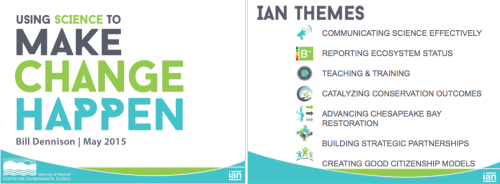
IAN hosted the annual Marine, Environmental and Estuarine Science (MEES) Colloquium in Annapolis. Ricky Arnold, a NASA astronaut and MEES alumnus, was the keynote speaker at the Colloquium. Caroline Donovan and Brianne Walsh, also MEES alumni, ran a session on science communication, and Heath Kelsey joined Margaret Palmer (SESYNC Director) and Fredricka Moser (MD SeaGrant Director) in a panel discussion on science application. A flipped or inverted classroom approach was used for the Science for Environmental Management course co-taught by Bill Dennison and Don Boesch, with Vanessa Vargas serving as the teaching Assistant.
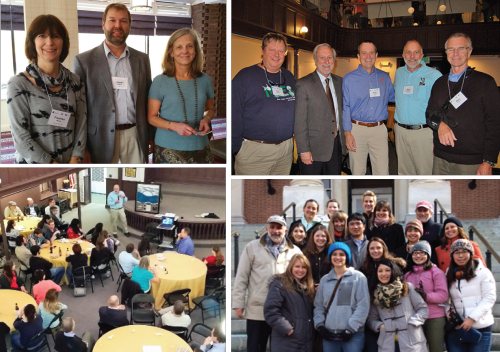
The Curriculum & Community Engagement for Restoration Science project in New York Harbor, a National Science Foundation sponsored partnership between IAN and the Billion Oyster Project, Harbor School, Pace University, New York City Department of Education, Columbia University, The River Project, and New York Aquarium was initiated in 2015. Adrian Jones and Tracey Saxby created an app and data entry web portal for the student and citizen science data input.
The Great Barrier Reef Foundation initiative to develop a climate resilience index continued in 2015, with Bill Dennison, Heath Kelsey, and Jane Thomas traveling to Townsville, Australia to facilitate a workshop. A series of six fact sheets (4 pp. each) was produced for Rookery Bay, FL, led by Caroline Donovan and Alex Fries. IAN staff attended the biennial Coasts and Estuaries Research Federation (CERF) in Portland, OR, leading sessions, presenting posters & talks and staffing the UMCES booth. At the CERF meeting, we learned that two former students in IAN science communication courses now teach science communication at their respective institutions; Dave Kimmel (East Carolina University) and Jude Apple (Western Washington University). The UMCES @ Chesapeake Bay Program staff attended various conferences, including the CERF meeting. In addition, Guy Stephens led an effort to present and discuss Chesapeake Bay Program web sites in a one day retreat called "Webstock 2015: One day of peace and the internet", with Catherine Krikstan, Bill Whorton and Zach Freedman participating.
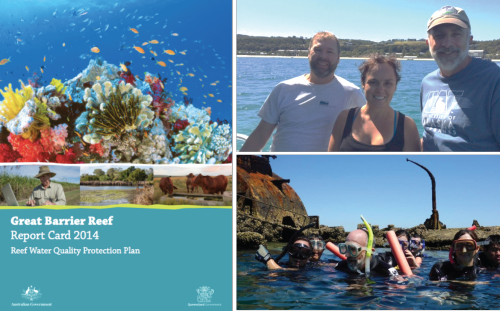
For 2016, IAN has some exciting things to look forward to: contributing to new Natural Resource Condition Assessments (Harriet Tubman, Fort Monroe), developing a Texas coast report card, ramping up the citizen science program for Chesapeake Bay monitoring, more USGS climate science center visits, developing new graduate courses (Science Visualization, Ecological Forecasting in Practice), rolling out new Chesapeake Bay websites, and finishing the Orinoco River report card.
About the author
Bill Dennison

Dr. Bill Dennison is a Professor of Marine Science and Vice President for Science Application at the University of Maryland Center for Environmental Science.

